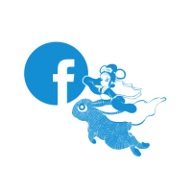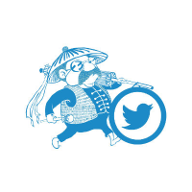









09 December 2016 by Jess O'Shea

In Chinese Happy/Merry Christmas is 'Sheng Dan Kuai Le or 圣诞快乐' in Mandarin and 'Seng Dan Fai Lok or 聖誕快樂' in Cantonese.
Snowflake Books value the idea of sharing festivals and traditions between cultures and would like to tell you what the season is like in the East.

Although Christmas and the Western New Year is not traditionally celebrated in Eastern culture, as only 1% of Chinese residents are Christians. There is some impact of the Christian festival in the Western world.
There isn't much knowledge in China about Christmas and the festivities surrounding the holiday are mainly celebrated in the big cities.
Throughout the festive season, you can find Christmas Trees, lights and other decorations on the streets and in department stores spreading the Christmas cheer with their beautiful displays.
But for the truly spectacular holiday light displays and fake snow, the Western theme parks in Hong Kong, such as Hong Kong Disneyland and Ocean Park put on beautiful displays that attract people from all religions and walks of life. The Hong Kong Tourism Board also sponsors WinterFest, an annual Christmas wonderland. As for festive plays, variety of performances, including touring productions of The Nutcracker are often staged in major cities during the Christmas season in China!

The Eastern Father Christmas is called 'Shen Dan Lao Ren' also known as 'Sheng dan lao ren' (Traditional: 聖誕老人, Simplified: 圣诞老人; means Old Christmas Man)
'Shen Dan Lao Ren' can be found in grottos located in shops (just like in Europe and America!) as well as in locations such as hotels and theme parks. Instead of elves, he is often accompanied with his sisters, young women dressed in elf or red and white skirts.
Not many people will put up a Christmas Tree in their home (or celebrate Christmas at all). If people do put up a tree it is normally a plastic one and might be decorated with paper chains, paper flowers, and paper lanterns (which they may refer to as a tree of light). The Christmas Trees that most people would see would be in shopping malls.
While government offices, restaurants, and shops are open on Christmas day, international schools and some embassies and consulates are closed on Dec. 25 in China.
Christmas Day (Dec. 25) and Boxing Day (Dec. 26) are public holidays in Hong Kong in which government offices and businesses are closed. Macau recognizes Christmas as a holiday and most businesses are closed.
In Taiwan, Christmas coincides with Constitution Day (行憲紀念日). Taiwan used to observe Dec. 25 as a day off. Currently, Dec. 25 is a regular working day in Taiwan.

The younger generation use Christmas as a way to escape the hustle and bustle of their busy daily lives. With shopping sprees in the weeks leading up to Christmas becoming increasingly common.
Another way to take in the festive spirit on Christmas Eve having Christmas parties with friends and eating Christmas dinners together, the parties can be held in homes or in restaurants.
Many younger people see it as a romantic holiday for couples to exchange gifts and date.
Another way the holiday joy is spread is by exchanging Christmas cards with close friends and family is becoming more popular as is exchanging small, inexpensive gifts.
A tradition that's becoming widespread, on Christmas Eve, is giving apples. Many stores have apples wrapped up in colored paper for sale. People give apples on Christmas Eve because in Chinese Christmas Eve is called "Ping'an Ye" (平安夜), meaning peaceful or quiet evening, which has been translated from the carol 'Silent Night'. The word for apple in Mandarin is "píngguǒ" (苹果) which sounds like the word for peace
Some people go will go Carol singing, although not many people understand them or know about the Christmas Story. Jingle Bells is a popular Carol in China!
The rural areas in the East; It is highly unlikely there would be much celebration here as there are far fewer Christians located in rural areas, and the people have had less contact with foreigners, so Christmas is sometimes a foreign mystery, especially for the older generations.
People in the cities and rural locations who are Christians in China go to special services. Going to Midnight Mass services has become very popular.
As for the famous Christmas food?
Traditional Christmas dinners are readily available at hotel restaurants and Western restaurants during Christmas in China. Supermarket chains catering to foreigners like Jenny Lou’s and Carrefour in China and City’Super in Hong Kong and Taiwan sell all the trimmings needed for a home-cooked Christmas feast.
An East-meets-West Christmas dinner can also be had during Christmas in China. 八宝鸭 (bā bǎo yā, eight treasures duck) is the Chinese version of a stuffed turkey. It is a whole duck stuffed with diced chicken, smoked ham, peeled shrimp, fresh chestnuts, bamboo shoots, dried scallops and mushrooms stir-fried with slightly undercooked rice, soy sauce, ginger, spring onions, white sugar and rice wine.
While most Chinese opt to overlook Christmas’s religious roots, a sizable minority do head to church for services in a variety of languages, including Chinese, English and French. There were some 16 million Chinese Christians in China in 2005, according to the Chinese government. Christmas services are held at an array of state-run churches in China and at houses of worship throughout Hong Kong, Macau, and Taiwan.

If you want to experience an Eastern Christmas we suggest heading to:
Hong Kong
Being voted by CNN television network as one of the Top 10 places to spend Christmas in the whole world. Hong Kong celebrates with a 2-day public holiday and is known for fantastic Christmas displays and festive events, fine food, and Christmas shopping.
Beijing
Whilst there is less of a religious impact, Beijing’s younger generation have a keen interest in the western festival and celebrate it as a happy occasion for social get-togethers and giving presents. Most people do work on Christmas day unless it falls on a weekend, as it is not regarded as a public holiday. And is regarded more as a commercial holiday.
Shanghai
In the modern and highly developed city Christmas is seen as a commercial opportunity with many shops using it as a way to sell products. Most shops in the downtown area decorate their shops to attract visitors in the holiday period. Christmas carols are heard everywhere. Christmas is not a public holiday and people will work unless it is a public holiday however, Christmas dinners with colleagues are welcome and increasingly becoming a trend
Guangzhou
Although it is not a public holiday Christmas is popular in Guangzhou (but some foreign embassies, consulates, and Western companies have several days off to celebrate Christmas). It sometimes seems that Christmas is more popular than Spring Festival, locals generally enjoy the festivities and commercial aspects and most Guangzhouers celebrate Christmas more as a time for couples and friends to get together or to have parties, instead of as a religious festival.
Christmas and New Year's Day (January 1) are big shopping days. Department stores, shops and restaurants are open as usual, and many of them extend business hours until midnight and launch various promotions.
Taiwan
Christmas is an unofficial holiday in Taiwan, as it coincides with Constitution Day, the anniversary of the signing of Taiwan's constitution in 1947. While its 5% Christian population celebrate the birth of Jesus Christ in churches and homes across the island, the majority enjoy the decorations and displays in shops, and the shopping.
Struggling to think of a Christmas present for your loved one? Have you had a look at our lovely collection of titles? We have something for everyone, adored by children and adults alike, our books are more than just a gateway to Mandarin. The beautifully illustrated stories hold great life lessons and while each of the characters are not symbols of good or bad but instead offer a more human personality, each with their own flaws and ways of overcoming issues through character development and life lessons.

Is a lovely tale which explores the traditional sign of the Chinese Zodiac Monkey sign. The story begins as the animal race starts and shows the drawbacks Cheeky Monkey faced throughout the race. Cheeky Monkey managed to get to the end of the race and came in 9th place, unfortunately, Cheeky Monkey had his heart set on coming in first and became very upset and misbehaved, however, he learned some valuable life lessons and learned new skills throughout his journey. This book is fantastic because it shows us that the mischief and bad behavior of others can be down to their own pain. All they need is extra love and attention. By the end of the book we see a real change in Cheeky Monkey and how he focused his energy and mind on something else becoming the best version of himself, he even earns himself a new name!
2017 (Year of The Roster)

This is my favorite Snowflake Book title, Red Rooster who may not have been the strongest of all the animals or the fastest was not discouraged when his friends laughed at him for wanting to enter the famous animal race. He tried his hardest and succeeded in becoming one of the 12 animal signs. He may not have come first in the animal race but he didn’t get upset as he knew he tried his hardest and achieved something many animals thought he wouldn’t be able to. He heads back to his farm from succeeding in becoming one of the Zodiac animals and discovered that there is trouble ahead that effected the well-being of all the animals on the planet! By the end of the tale, we see how Big Red Rooster himself saves the day with his unique talent. The lovely story is equipped with beautiful illustrations and paired with vibrant colors that bring the books to life.
Chinese New Year!

This tale is brilliant as it enlightens western culture on the history of the traditional tales and rituals that surround the Chinese New Year (also known as Spring Festival). It educates the theme behind using fireworks and using the colour red during the Chinese New Year celebrations as well as the traditional reason behind staying up all night and hosting New Year's parties with loud music.